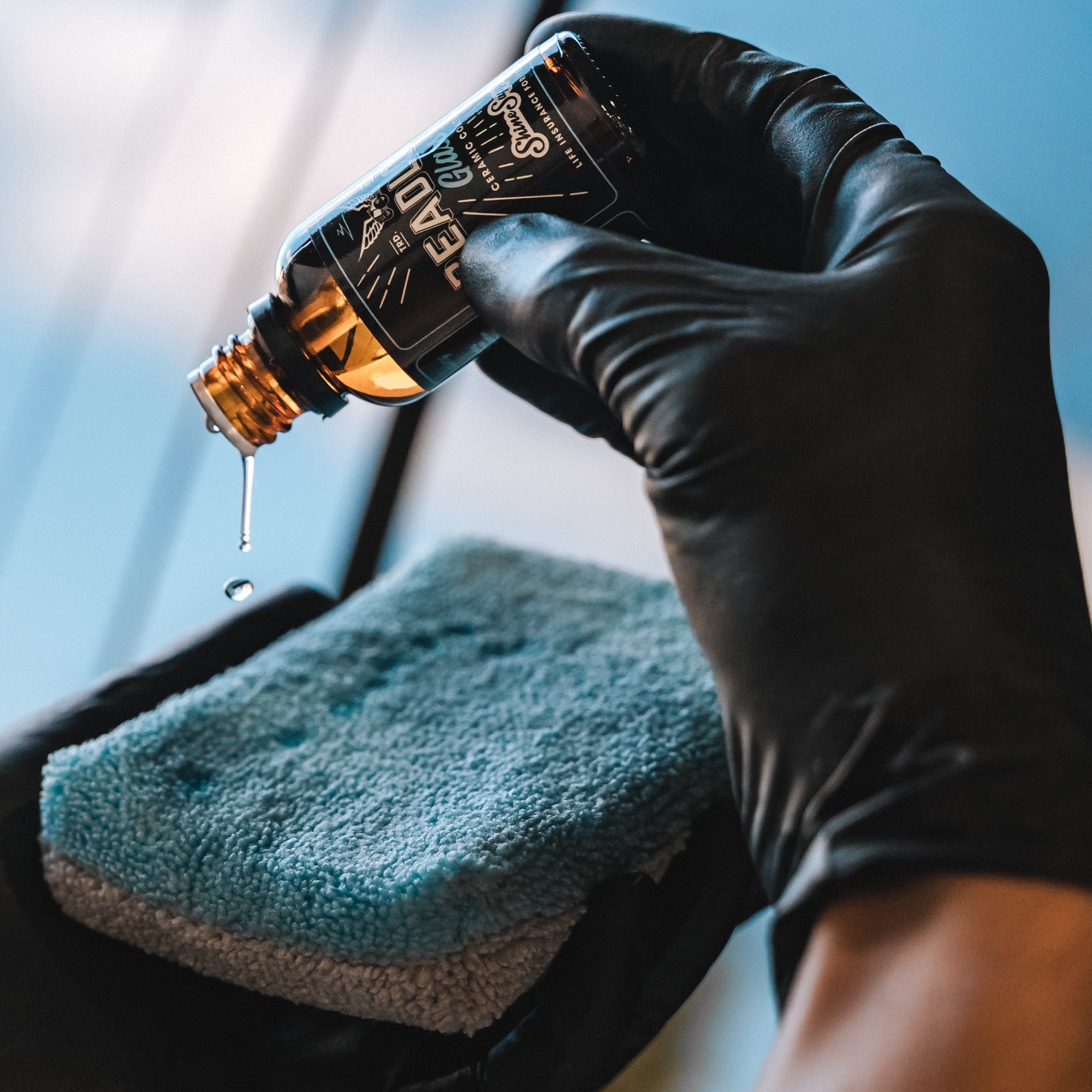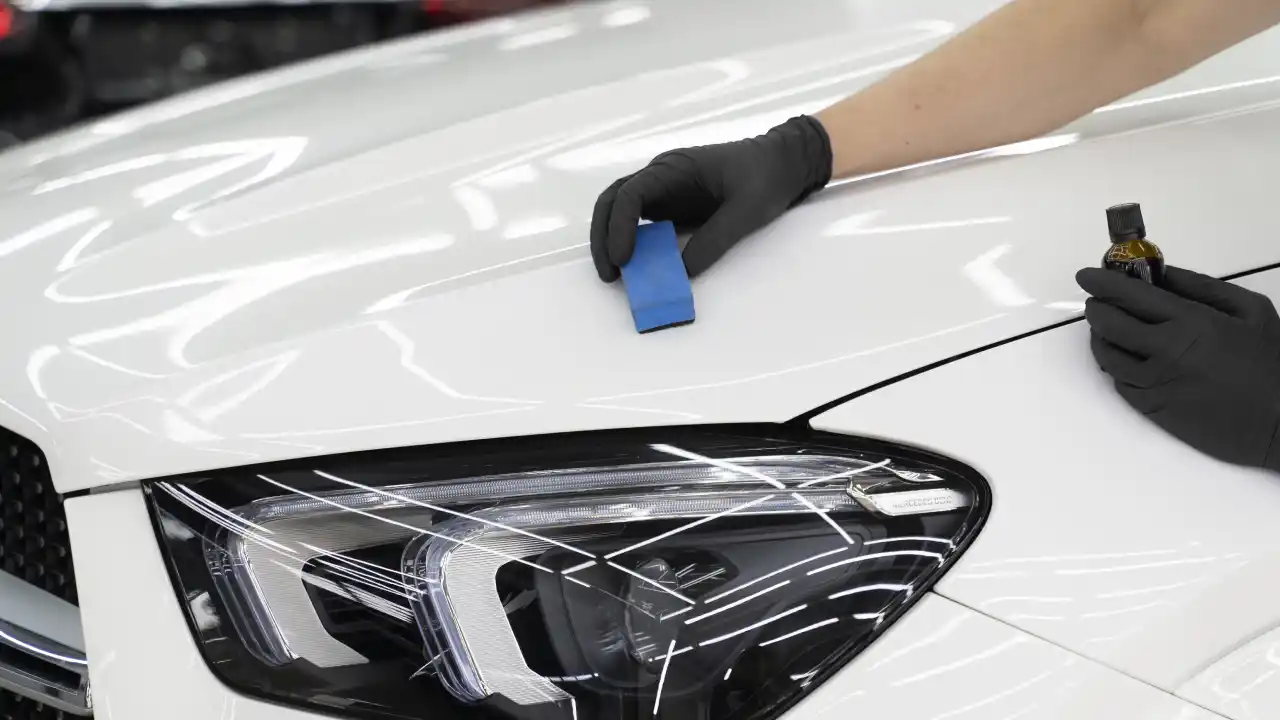Discovering the Science Behind Ceramic Covering and Its Effect On Vehicle Describing
The application of ceramic finish in auto detailing stands for a significant improvement in automobile treatment, rooted in its advanced chemical buildings, largely silica dioxide and titanium dioxide. As we explore the ins and outs of the application procedure and the lasting implications for vehicle maintenance, it ends up being clear that the selection of ceramic covering can fundamentally change one's technique to automobile care.
What Is Ceramic Covering?
Ceramic coating is a modern option that has actually obtained appeal in the vehicle describing sector for its ability to offer resilient protection for automobile surface areas. This innovative protective layer is commonly composed of silica dioxide (SiO2), which creates a strong bond with the automobile's paint, developing a resilient guard against ecological contaminants. Unlike conventional wax or sealers, ceramic coverings use superior resistance to UV rays, chemical spots, and physical abrasions.
The application of ceramic coating includes a meticulous process, where the lorry's surface is completely cleansed and sanitized before the finishing is used (Ceramic Coating). As soon as cured, the finishing boosts the car's gloss, deepness, and quality, providing a showroom-quality surface that lasts for many years. Among the key advantages of ceramic finishing is its hydrophobic residential or commercial properties, which push back water and dust, making upkeep simpler and decreasing the regularity of laundries
The Chemistry of Ceramic Layer
A fundamental aspect of ceramic finishing depends on its chemical structure, mostly identified by the presence of silica dioxide (SiO2) This compound is essential to the formation of a resilient, protective layer that bonds chemically to the car's surface. When applied, the SiO2 molecules undergo a process called polymerization, wherein they form a network of interconnected structures. This results in a durable, hydrophobic surface area that repels water and contaminants.
In enhancement to SiO2, lots of ceramic finishes integrate titanium dioxide (TiO2) and other ingredients to boost their efficiency qualities. TiO2, for example, adds to enhanced hardness and chemical resistance. The communication between these compounds develops a special molecular structure that provides a high degree of security against ecological aspects such as UV rays, acid rain, and oxidation.
Furthermore, the application procedure typically involves a careful prep work of the surface to make certain ideal adhesion of the finish. This chemistry not only makes certain a resilient finish however also improves the aesthetic charm of the car. Recognizing the elaborate chemistry behind ceramic coatings is necessary for detailing experts that aim to give exceptional defense and longevity for their clients' vehicles.
Benefits of Ceramic Coating
While outlining experts often highlight the advantages of ceramic coatings, their advantages extend much beyond aesthetic appeals. Ceramic finishes create a hydrophobic surface area that drives away dust, water, and grime, substantially reducing the frequency of cleans and the initiative required to keep a vehicle's look.
Furthermore, ceramic coatings boost the long life of the car's finish. Unlike typical waxes or sealers, which might last a few months, ceramic finishes can endure for many years, supplying a lasting solution for car treatment. This toughness translates to set you back financial savings, as proprietors are much less likely to need frequent reapplication.
Additionally, ceramic finishes are immune to chemical discolorations and etching, which can happen from acidic materials like bird droppings or tree sap. This resistance not just protects the lorry's looks but likewise reduces potential damage - Ceramic Coating. Generally, the financial investment in ceramic layer my response uses automobile proprietors a significant return in terms of protection, simplicity of maintenance, and durable visual allure, making it a significantly preferred selection in the realm of vehicle detailing
Application Refine Explained

When the surface is properly prepared, the ceramic covering can be used. Making use of an applicator pad, the service technician uses the finishing in tiny sections, working in a crosshatch pattern to make sure even insurance coverage.
After applying the layer, the vehicle needs to be allowed to heal, which may take numerous hours to a number of days, depending upon the certain item used. During this duration, it is essential to keep the car away from dampness and impurities. When healed, the ceramic finishing creates a strong bond with the paint, offering boosted security and a glossy coating. Correct application is necessary to make best use of the durability and performance of the ceramic covering.

Long-lasting Influence on Vehicle Treatment
The long-term influence of ceramic coating on automobile treatment is considerable, as it basically modifies how owners preserve their lorries. By producing a resilient, hydrophobic layer on the car's surface area, ceramic layers lessen the adherence of dirt, gunk, and pollutants. This building lowers the frequency of cleaning called for, eventually saving water and cleansing products.
Additionally, the UV security offered by ceramic coatings assists to stop oxidation and fading of the lorry's paint, protecting its visual allure and content resale value over time - Ceramic Coating. This protective barrier also minimizes the possibility of scrapes and swirl marks, which prevail concerns in standard paint finishes
Additionally, ceramic coverings promote much easier maintenance, permitting owners to cleanse their cars with very little effort. The smooth surface makes it tough for contaminants to bond, enabling easier removal throughout regular cleaning.
In the future, the financial investment in ceramic covering might lead to cost savings in lorry treatment services and products. On the whole, the withstanding benefits of ceramic finishes not only enhance the appearance of lorries yet also contribute to a more sustainable and efficient technique to lorry upkeep.
Conclusion
To conclude, the application of ceramic coating represents a significant development in car outlining, driven by its special chemical composition of silica dioxide and titanium dioxide. This innovation not only boosts the aesthetic charm of lorries this page but likewise provides robust security versus environmental risks and wear. The long-term advantages, consisting of minimized upkeep frequency and enhanced durability, underscore the worth of ceramic layers as a crucial financial investment for keeping lorry look and honesty in time.
